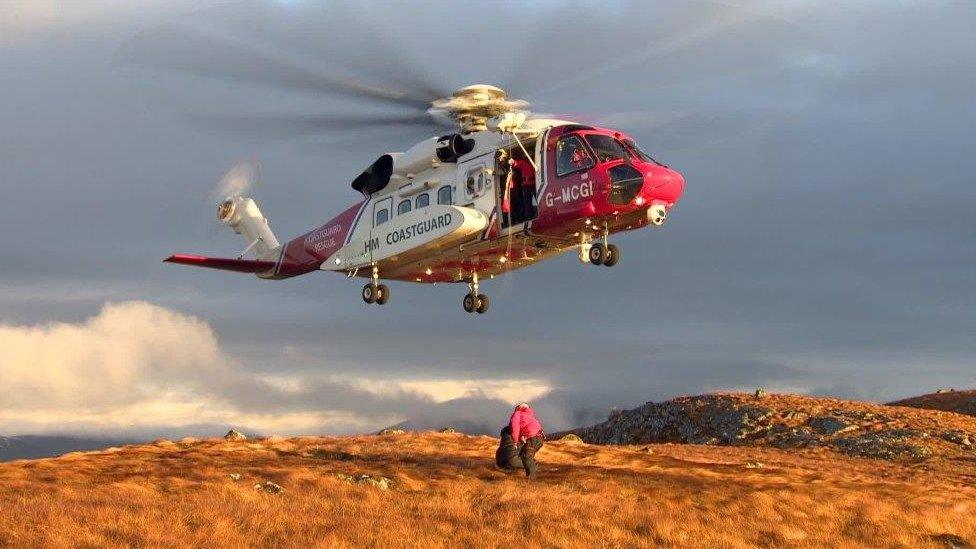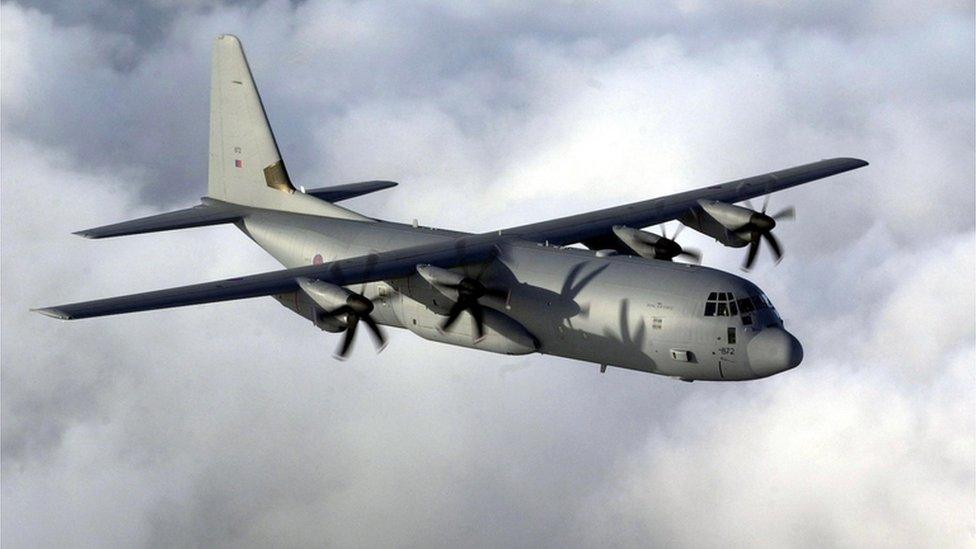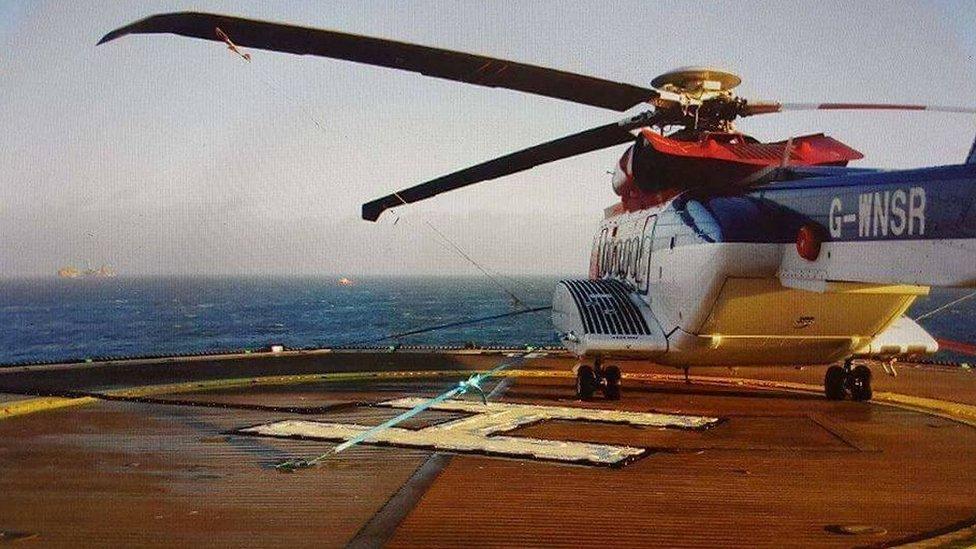RAF Hercules in near-miss with coastguard helicopter in Highlands
- Published

The Coastguard helicopter was on a search and rescue mission in the West Highlands
It has emerged that a military transport aircraft almost collided with a coastguard helicopter in the west Highlands.
A UK Airprox Board report said the incident occurred on 30 May.
The Hercules C130 was on a low flying mission at about 16:45 when its avoidance system altered the pilots to an aircraft flying 700ft above them.
The coastguard crew were taking part in a rescue mission east of Knoydart when they spotted the military aircraft.
The report said that although the C130 was taking part in low flying manoeuvres in good visibility, it was spotted late due to both aircrafts being at a low level.
The coastguard pilot managed to advert the risk of a collision by turning the S92 helicopter to the left, in case the C130 ascended into their path.
The pilot described it as a "late-spot" due to the low height of the S92 and the narrow valley.
The C130 aircraft crew held altitude, turned and continued on their route east until they were clear of the conflict.

The crew of the RAF aircraft maintained their altitude under clear of the conflict
The Airprox report assessed that the risk of the aircraft colliding was "medium".
A spokesman for Headquarters Air Command, which is the only command currently active in the Royal Air Force said: "The limitations of line-of-sight when flying in valleys is well known. Here, neither crew was able to avail themselves of an Air Traffic Service due to their respective operating altitudes and radio/TCAS (traffic collision avoidance system).
"Further investigation into why the C130 crew was unaware of the existence of the TDA has revealed that the C130's entry into the low-level system (in the Lake District) was coincident with the establishment of the TDA (temporary dangerous areas), thus increasing the likelihood that the crew would not receive the transmissions from D&D on Guard due to terrain screening."
Some members had felt that the operations staff at the base airfield of low-level traffic should be responsible for passing on such messages, but the board agreed that there was little the C130 crew could do as they were not aware of the TDA or the S92 until their TCAS altered them.
The UK Airprox Board decided there was "no risk of collision" as the TCAS had prompted both pilots to take timely action.
- Published22 March 2018

- Published5 June 2018

- Published15 February 2016
